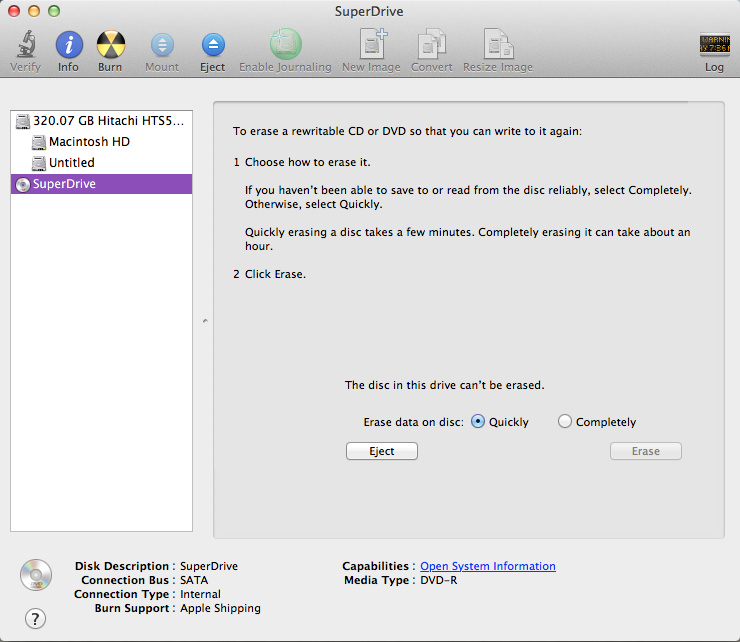

- #USING MAC TIME MACHINE CLONE HARDRIVE HOW TO#
- #USING MAC TIME MACHINE CLONE HARDRIVE MAC OS#
- #USING MAC TIME MACHINE CLONE HARDRIVE SOFTWARE#
#USING MAC TIME MACHINE CLONE HARDRIVE HOW TO#
In Big Sur, Apple added the Backup role, designed for Time Machine snapshots and incremental backups, and which is effectively unreadable in Catalina and earlier, because those releases simply don’t know how to interpret it. When preparing a new drive with 10.9.4, Time Machine will change the attributes of the partition so.
#USING MAC TIME MACHINE CLONE HARDRIVE MAC OS#
Apple has changed the behavior of Time Machine in Mac OS 10.9.4.
#USING MAC TIME MACHINE CLONE HARDRIVE SOFTWARE#
(In Catalina, Apple added volume groups, which are used to hold the operating system itself in pieces, separating your data from system files, enhancing system security and integrity.) This article is to explain the changes that occur when opting to use the Time Machine software on your external drive in Mac OS 10.9.4 update. You can have several volumes in a container that dynamically share the space allotted to the container, which means you don’t have to allocate storage space to a given volume beforehand. Each container has one or more volumes, and each volume (starting in High Sierra) has a “role,” which defines the kind of volume it is. APFS divides a disk into one or more containers (similar to partitions). Not only must you use Big Sur to back up to an APFS-formatted Time Machine volume, you can’t even access the backups from a Mac with Catalina or an earlier macOS version installed. Then, you are going to want to click the Time Machine on. First, make sure your external drive is hooked into your Mac and that your Mac recognizes it.

Here you will be able to set up your Time Machine and your external drive. This might go without saying, but I know enough people with mixed-system setups who will ask. If you do find it in your menubar, click on it, then click on Open Time Machine Preferences.

I would set up any new Time Machine volume formatted with APFS, but not convert an old one from HFS+.īig Sur APFS-based Time Machine backups can’t be used in Catalina or earlier releases. Read more about backup, external, hard drive, mac, replace, Time Machine.While APFS has advantages for SSD-based storage, there really aren’t any for hard disk drives, the most likely kind of drive used for large-capacity backup drives. Time Machine is most commonly used to back up to an external USB or FireWire hard drive directly attached to a Mac running Leopard. It’ll likely take many hours to finish since it needs to backup everything on your Mac. Within a couple of minutes, Time Machine will initiate a backup to this new hard drive.

Click the red dot to close System Preferences. Many Mac users use an external hard drive to connect to the Mac for Time Machine backup or store photo libraries to save Mac storage space.In the Available Disks section, click on the name of the external hard drive that is replacing the dead hard drive then click the Use Disk button.Time Machine will automatically backup your machine every hour, every day and every week. I looked at a lot of options, but none really made more sense to me than using Time Machine and an external drive. I knew that I had to start backing up my data. For me, I learned my lesson when my computer crashed a year ago. And it really should be taken advantage of. Slide the the time machine slider to ‘On’ and that’s it. Time Machine is a great utility for the Mac. In the Backup Disks section, click on the name of the external hard drive that has died and then click the Remove Disk button. Now in Time Machine click ‘Select Disk’ and select the hard drive (my backup or whatever you maned it in the step above) from the list.Click on the Apple menu and select System Preferences.As stuffe pointed out as well, Time Machine allows you to restore to a previous backup, since Time. Here are instructions on how to reconfigure Time Machine to use a different hard drive. There is more than one backup stored on that hard drive. If you use Time Machine to backup your Mac to an external hard drive then you either have or will replace the external drive when it dies. Do you need to reconfigure Time Machine to use a new external hard drive? If you read my Tech Tips regularly then you’ll recall that I strongly recommend that everybody setup automatic and redundant systems to backup his or her Mac.


 0 kommentar(er)
0 kommentar(er)
